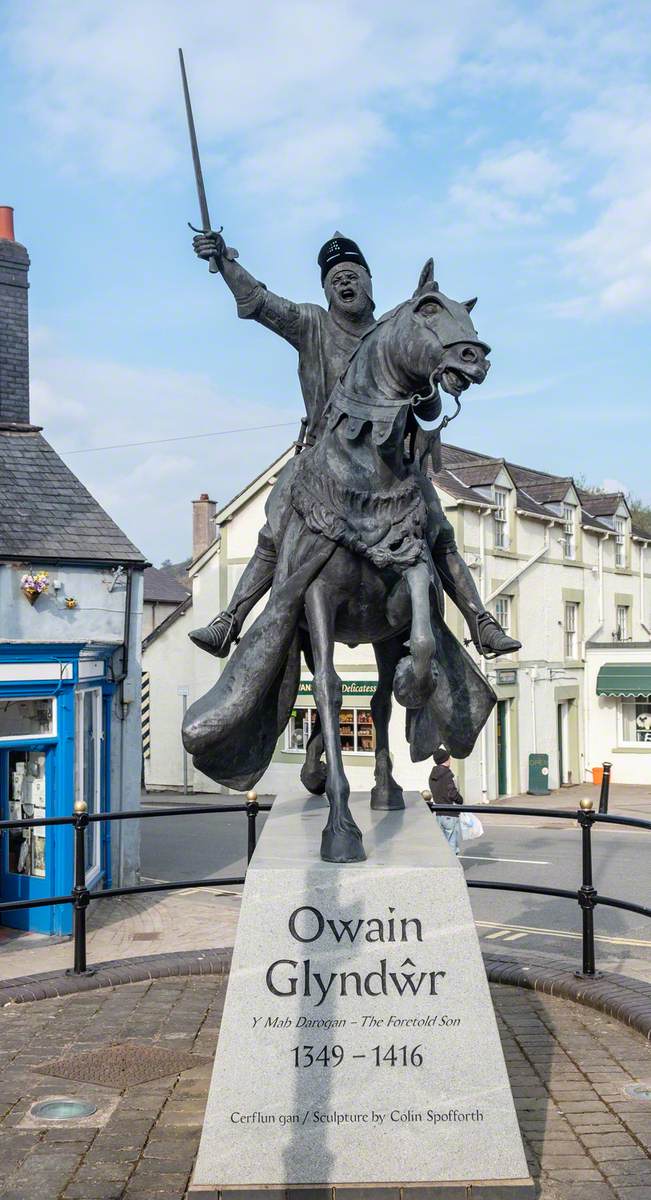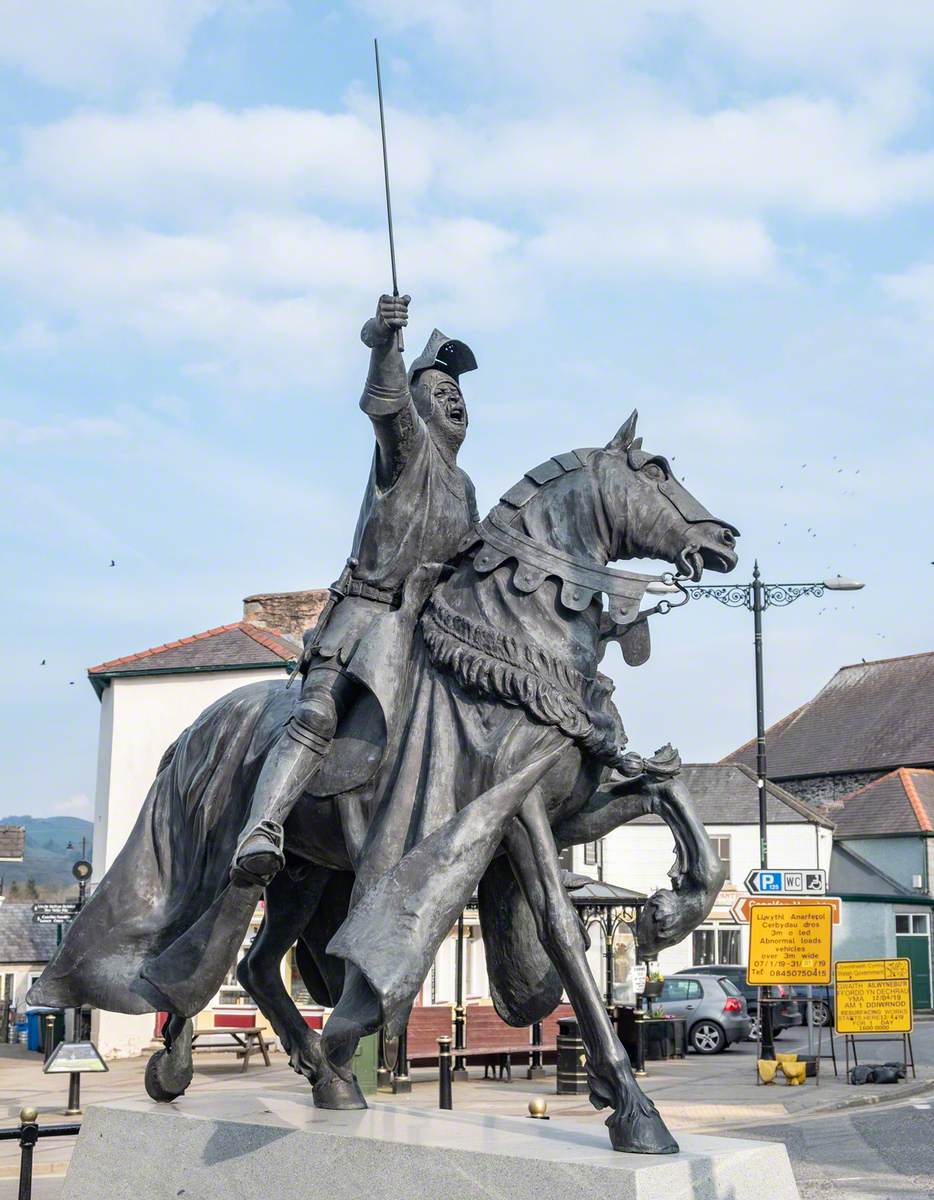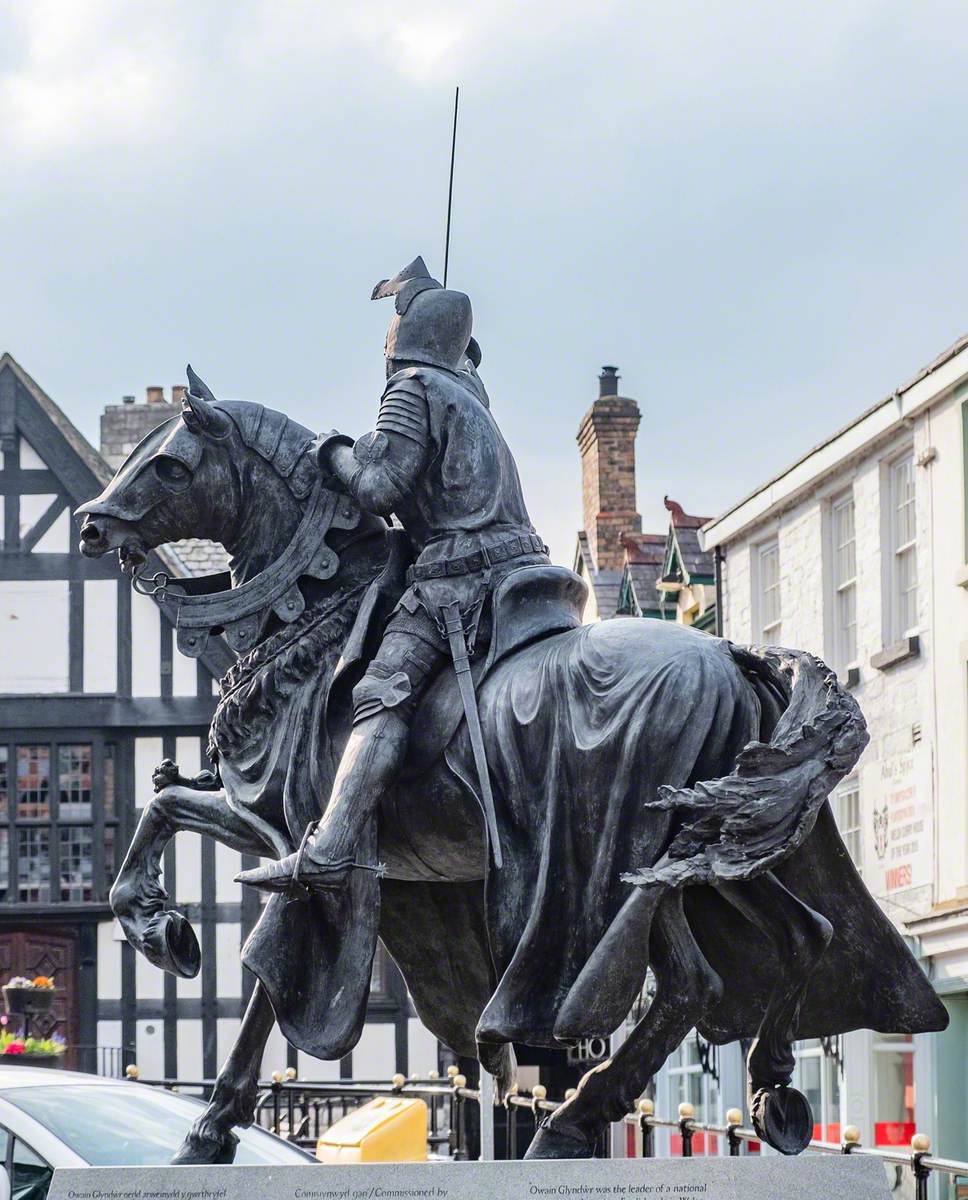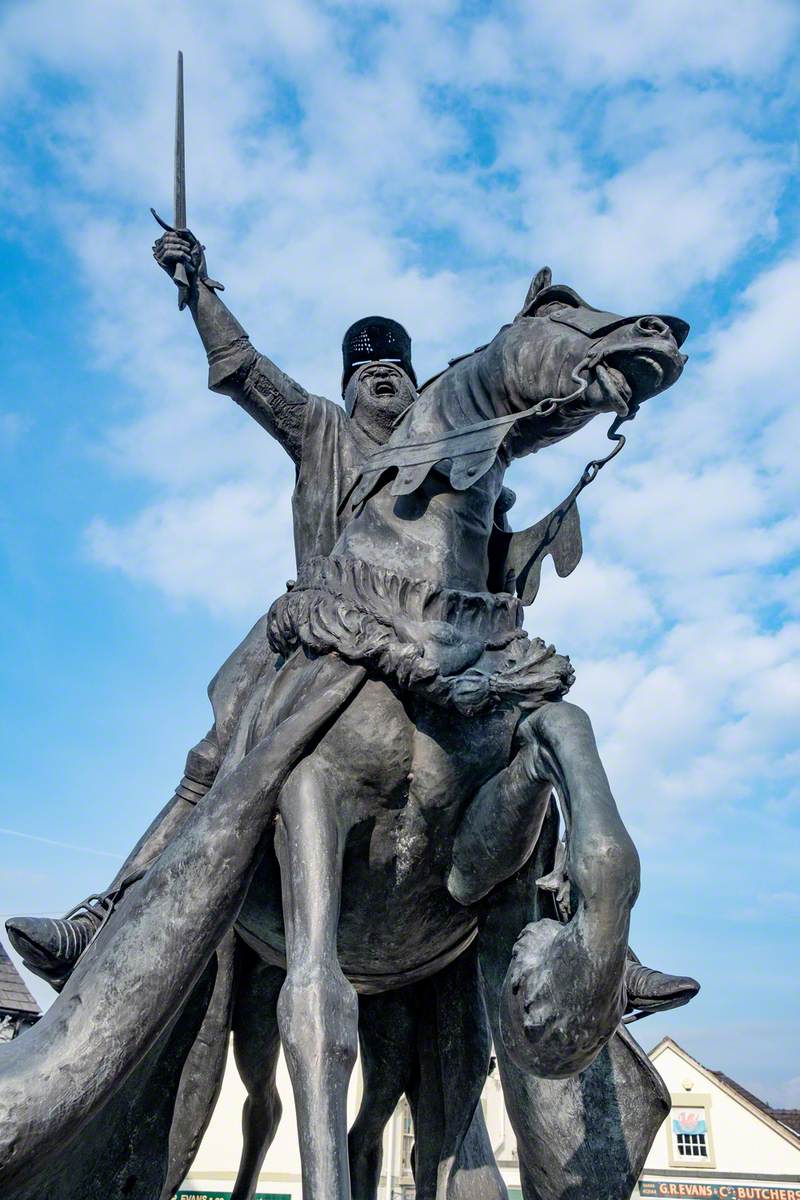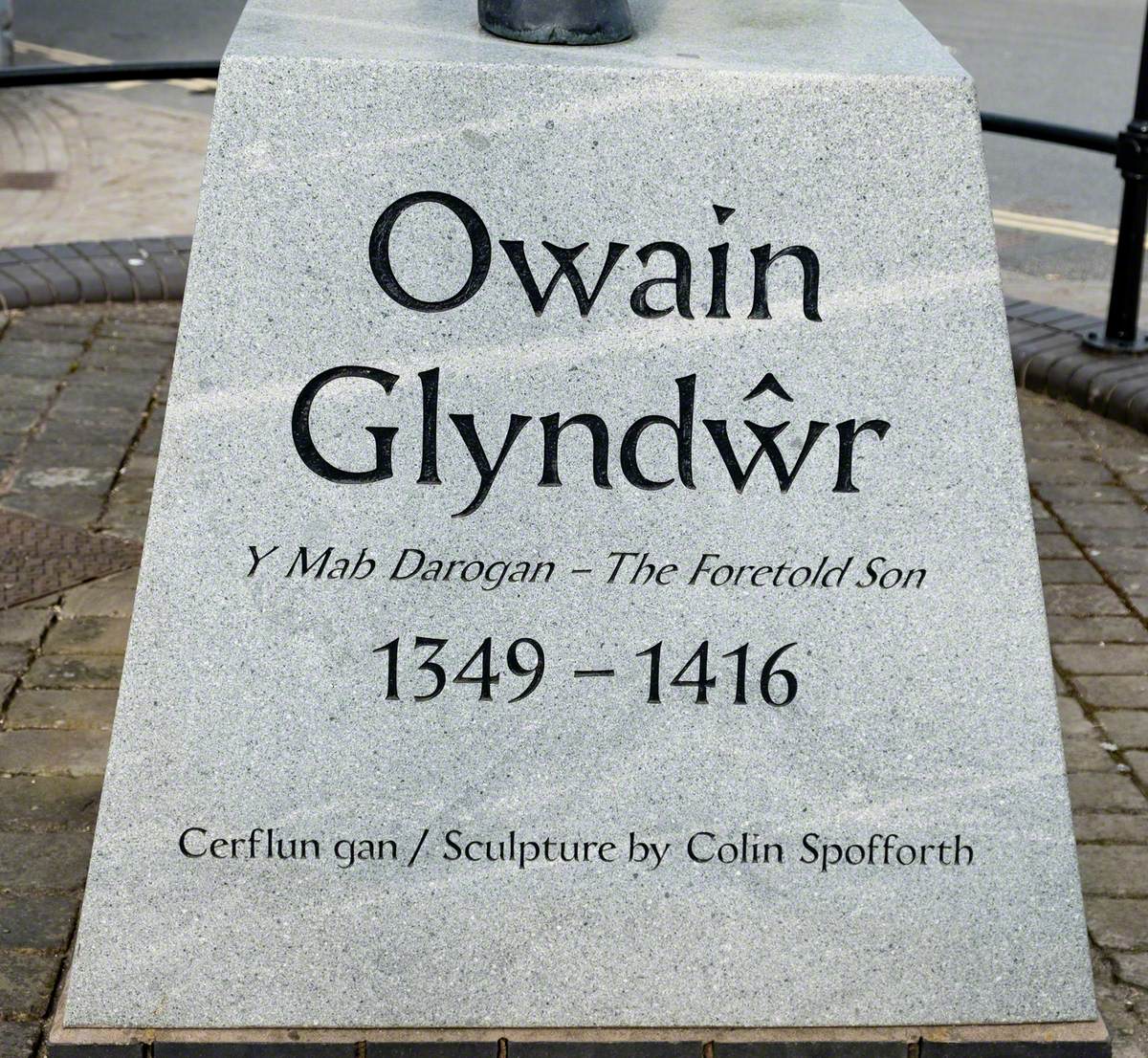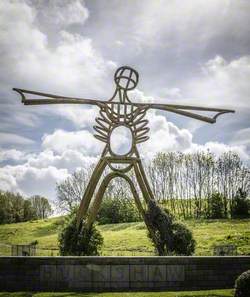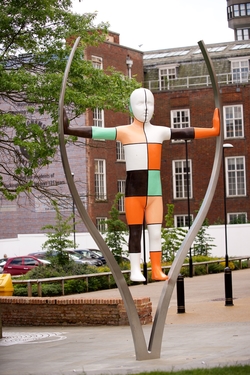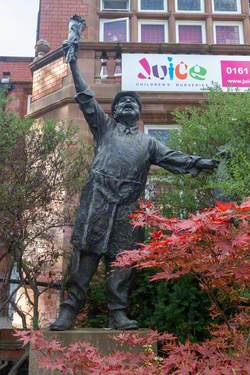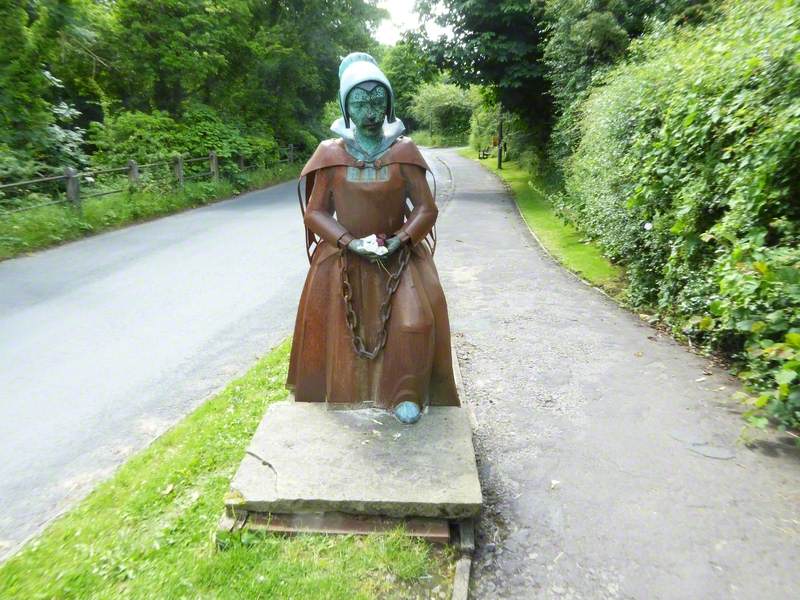How you can use this image
This image can be used for non-commercial research or private study purposes, and other UK exceptions to copyright permitted to users based in the United Kingdom under the Copyright, Designs and Patents Act 1988, as amended and revised. Any other type of use will need to be cleared with the rights holder(s).
Review the copyright credit lines that are located underneath the image, as these indicate who manages the copyright (©) within the artwork, and the photographic rights within the image.
The collection that owns the artwork may have more information on their own website about permitted uses and image licensing options.
Review our guidance pages which explain how you can reuse images, how to credit an image and how to find images in the public domain or with a Creative Commons licence available.
Notes
Add or edit a note on this artwork that only you can see. You can find notes again by going to the ‘Notes’ section of your account.
The statue depicts Glyndr on a battle charger rallying his people to the Welsh cause at the time of the hostilities in September 1400. It was originally intended to sit atop an 8–ton granite plinth quarried in China, but this was lost down a ravine during a monsoon during transport to the UK. The present plinth was quarried at Trefor near Pwllheli. The statue replaced an earlier controversial and widely disliked statue of Glyndwr standing with his sword (known by locals as 'the gnome in wellies'). On 16th September 1400, Glyndwr instigated the Welsh Revolt against the rule of Henry IV of England. Although initially successful, the uprising was eventually put down. Glyndwr was last seen in 1412 and was never captured nor tempted by royal pardons and never betrayed.
Title
Owain Glyndwr (c.1349–c.1416)
Date
2007
Medium
bronze & granite
Measurements
H 450 x W (?) x D (?) cm
Accession number
LL21_AEB_S001
Acquisition method
commissioned by Denbighshire County Council, the Welsh Development Agency, the Wales Tourist Board, Ivor Williams Trailers, the Corwen Partnership and Lord Newborough of Rhug Estates
Work type
Equestrian
Owner
Denbighshire County Council
Custodian
Corwen Community Council
Work status
extant
Unveiling date
13th September 2007
Access
at all times
Inscription description
front of plinth: Owain Glydŵr / Y Mab Darogan - The Foretold Son / 1349 – 1416; side of the plinth, in Welsh on the left, and translated into English on the right: Owain Glyndŵr was the leader of a national / revolt against English rule in Wales, / beginning in 1400 with an attack on Ruthin's / foreignh colony from hbis stronhold near / Corwen. / Proclaimed Prince of Wales by a / Welsh parliament – the only one ever to / receive such an honour – he gained control / over most of the country, winning battles and / capturing castles. He summoned several / parliaments, held an alliance with France, / Ireland and Scotland, and proposed an / independent church and two universities / for Wales. /Owain sustained the hopes of his nation for / over fifteen years and his myth lived on even / though he died in obscurity, having never / accepted the pardon offered to him. / In succeeding centuries he has become a / potent symbol of the Welsh spirit and the / father of modern Wales
